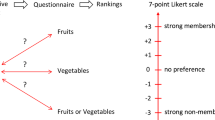Abstract
Empirical evidence has confirmed that quantum effects occur frequently also outside the microscopic domain, while quantum structures satisfactorily model various situations in several areas of science, including biological, cognitive and social processes. In this paper, we elaborate a quantum mechanical model which faithfully describes the Ellsberg paradox in economics, showing that the mathematical formalism of quantum mechanics is capable to represent the ambiguity present in this kind of situations, because of the presence of contextuality. Then, we analyze the data collected in a concrete experiment we performed on the Ellsberg paradox and work out a complete representation of them in complex Hilbert space. We prove that the presence of quantum structure is genuine, that is, interference and superposition in a complex Hilbert space are really necessary to describe the conceptual situation presented by Ellsberg. Moreover, our approach sheds light on ‘ambiguity laden’ decision processes in economics and decision theory, and allows to deal with different Ellsberg-type generalizations, e.g., the Machina paradox.
Similar content being viewed by others
Notes
The Sure–Thing principle was stated by Savage by introducing the businessman example, but it can be presented in an equivalent form, the independence axiom, as follows: if persons are indifferent in choosing between simple lotteries L 1 and L 2, they will also be indifferent in choosing between L 1 mixed with an arbitrary simple lottery L 3 with probability p and L 2 mixed with L 3 with the same probability p.
References
von Neumann, J., Morgenstern, O.: Theory of Games and Economic Behavior. Princeton (1944)
Savage, L.J.: The Foundations of Statistics. Wiley, New York (1954)
Ellsberg, D.: Risk, ambiguity, and the Savage axioms. Q. J. Econ. 75, 643–669 (1961)
Machina, M.J.: Risk, ambiguity, and the dark–dependence axioms. Am. Econ. Rev 99, 385–392 (2009)
Knight, F.H.: Risk, Uncertainty and Profit. Houghton Mifflin, Boston (1921)
Gilboa, I.: Expected utility with purely subjective non-additive probabilities. J. Math. Econ. 16, 65–88 (1987)
Gilboa, I., Schmeidler, D.: Maxmin expected utility with non–unique prior. J. Math. Econ. 18, 141–153 (1989)
Maccheroni, F., Marinacci, M., Rustichini, A.: Dynamical Variational Preferences. The Carlo Alberto Notebooks, vol. 1, p 37 (2006)
Klibanoff, P., Marinacci, M., Mukerji, S.: A smooth model of decision making under ambiguity. Econometrica 73, 1849–1892 (2005)
Epstein, L.G.: A Definition of uncertainty aversion. Rev. Econ. Stud. 66, 579–608 (1999)
Baillon, A., L’Haridon, O., Placido, L.: Ambiguity models and the Machina paradoxes. Am. Econ. Rev. 1547, 1547–1560 (2011)
Aerts, D., Broekaert, J., Czachor, M., D’Hooghe, B.: The violation of expected utility hypothesis in the disjunction effect. A quantum-conceptual explanation of violations of expected utility in economics.In: Lecture Notes in Computer Science, vol. 7052, pp 192–198. Springer, Berlin (2011)
Aerts, D., D’Hooghe, B., Sozzo, S.: A quantum cognition analysis of the Ellsberg paradoxIn: Lecture Notes in Computer Science, vol. 7052, pp 95–104. Springer, Berlin (2011)
Aerts, D., Sozzo, S.: Quantum structure in economics: the Ellsberg paradox. In: D’Ariano, M. et al. (eds.) Quantum Theory: Reconsideration of Foundations–6, pp 487–494. AIP, New York (2012)
Aerts, D., Sozzo, S.: Contextual risk and its relevance in economics; a contextual risk model for the Ellsberg paradox. J. Eng. Sci. Tech. Rev. 4, 241–245; 246–250 (2012)
Aerts, D., Sozzo, S., Tapia, J.: A quantum model for the Ellsberg and Machina paradoxes.In: Lecture Notes in Computer Science, vol. 7620, pp 48–59. Springer, Berlin (2012)
Gudder, S.P.: Quantum probability spaces. Proc. Am. Math. Soc. 21, 296302 (1969)
Bruza, P.D., Lawless, W., van Rijsbergen, C.J., Sofge, D. (eds.): Proceedings of the AAAI Spring Symposium on Quantum Interaction, 27–29 Mar 2007. Stanford University, Stanford (2007)
Bruza, P.D., Lawless, W., van Rijsbergen, C.J., Sofge, D. (eds.): Quantum Interaction: Proceedings of the Second Quantum Interaction Symposium. College Publications, London (2008)
Bruza, P.D., Sofge, D., Lawless, W., van Rijsbergen, K., Klusch, M. (eds.): Proceedings of the Third Quantum Interaction Symposium. Lecture Notes in Artificial Intelligence, vol. 5494. Springer, Berlin (2009)
Aerts, D.: Quantum structure in cognition. J. Math. Psychol. 53, 314–348 (2009)
Busemeyer, J.R., Lambert-Mogiliansky, A.: An exploration of type indeterminacy in strategic decision-making.In: Lecture Notes in Computer Science, vol. 5494, pp 113–127. Springer, Berlin (2009)
Pothos, E.M., Busemeyer, J.R.: A quantum probability model explanation for violations of ‘rational’ decision theory. Proc. Roy. Soc. B 276, 2171–2178 (2009)
Danilov, V.I., Lambert-Mogiliansky, A.: Expected utility theory under non-classical uncertainty. Theor. Decis. 68, 25–47 (2010)
Khrennikov, A.Y.: Ubiquitous Quantum Structure. Springer, Berlin (2010)
Song, D., Melucci, M., Frommholz, I., Zhang, P., Wang, L., Arafat, S. (eds.): Quantum Interaction. Lecture Notes in Computer Science, vol. 70582. Springer, Berlin (2011)
Busemeyer, J.R., Pothos, E., Franco, R., Trueblood, J.S.: A quantum theoretical explanation for probability judgment ‘errors’. Psychol. Rev. 118, 193–218 (2011)
Busemeyer, J.R., Bruza, P.D.: Quantum Models of Cognition and Decision. Cambridge University Press, Cambridge (2012)
Tversky, A., Kahneman, D.: Judgements of and by representativeness. In: Kahneman, D., Slovic, P., Tversky, A (eds.) Judgement Under Uncertainty: Heuristics and Biases, pp 84–98. Cambridge University Press, Cambridge (1982)
Tversky, A., Shafir, E.: The disjunction effect in choice under uncertainty. Psychol. Sci. 3, 305–309 (1992)
Author information
Authors and Affiliations
Corresponding author
Rights and permissions
About this article
Cite this article
Aerts, D., Sozzo, S. & Tapia, J. Identifying Quantum Structures in the Ellsberg Paradox. Int J Theor Phys 53, 3666–3682 (2014). https://doi.org/10.1007/s10773-014-2086-9
Received:
Accepted:
Published:
Issue Date:
DOI: https://doi.org/10.1007/s10773-014-2086-9




